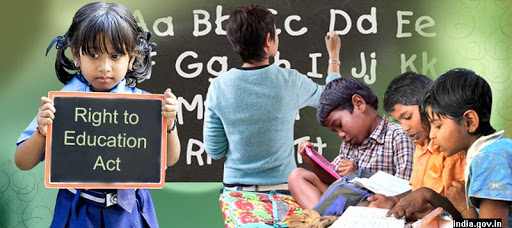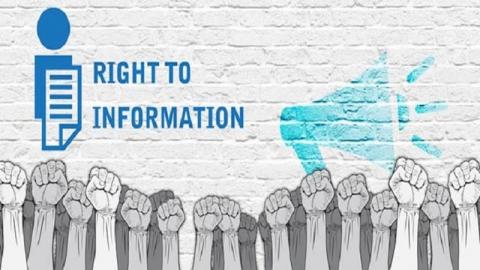Right to Education – 2009
What is Right to Education?
- Right to Education Act (RTE) provided free and compulsory education to children 2009 and enforced it as a fundamental right under Article 21-A.
- It describes modalities of the importance of free and compulsory education forchildren aged between 6-14 years in India under Article 21 (A) of the Constitution
- of India.
- The government schools shall provide free education to all the children and theschools will be managed by School Management Committees (SMC). Privateschools shall admit at least 25% of the children in their schools without any fee.
- The National Commission for Elementary Education shall be constituted to monitor all aspects of elementary education including quality.
Why Right to Education?
- The Right to Education serves as a building block to ensure that every child has his or her right to get a quality elementary education.
- The Right to Education Act lays down norms and standards relating to Pupil-Teacher-Ratios (number of children per teacher), classrooms, separate toilets for girls and boys, drinking water facility, number of school-working days, working hours of teachers, etc.
- The Right to Education Act 2009 prohibits all kinds of physical punishment and mental harassment, discrimination based on gender, caste, class and religion, screening procedures for admission of children capitation fee, private tuition centers, and functioning of unrecognized schools.
- The Right to Education Act 2009 provides for the development of a curriculum, which would ensure the all-round development of every child. Build a child’s knowledge, human potential and talent.
Constitutional Background:
- Tapas Majumdar Committee (1999) was set up, which encompassed the insertion of Article 21A.
- The 86th amendment to the Constitution of India in 2002, provided the Right to Education as a fundamental right in part-III of the Constitution inserted Article 21A which made Right to Education a fundamental right for children between 6- 14 years.
Salient Features of this act:
- Free and compulsory education to all children of India in the 6 to 14 age group.
- No child shall be held back, expelled or required to pass a board examination until the completion of elementary education.
- If a child above 6 years of age has not been admitted in any school or could not complete his or her elementary education, then he or she shall be admitted in a class appropriate to his or her age.
- It prohibits physical punishment and mental harassment, screening procedures for admission of children, Capitation fee, Private tuition by teachers and
- running of schools without recognition.
- School teachers will need adequate professional degree within five years orelse will lose the job.
- School infrastructure (where there is a problem) need to be improved every 3years, else recognition will be cancelled.
- It focuses on making the child free of fear, trauma and anxiety through asystem of child-friendly and child-centered learning.
Achievements of the RTE Act:
- The RTE Act has successfully managed to increase enrolment in the upper primary level (Class 6-8). Nationally, between 2009- 2016, the number of students in the upper primary level increased by 19.4 percent.
- The RTE Act has been able to bring an improvement in the enrolment number of girls in the upper primary section. The percentage of girls’ total enrolment in the upper primary has increased from 48 percent in FY2009-10 to 49 percent in FY2013-2014.
- There have been significant improvements in the schools when we compare the social infrastructure indicators in FY2013-14 to FY2009-10.
- In the Alwar District, school sanitation increased girl’s enrolment by one-third and improved academic performance for boys and girls by 25 percent.
- The teacher indicator indicates the increase in the number of teachers working in government and aided schools.
- Improvement in school facilities in government schools in rural India.
- The mandate for reservation of 25 percent seats in private unaided schools for EWS groups was a major step to bridge the gap between the quality of education offered by the government and private players.
- The Government has also launched an integrated scheme, for school education named Samagra Shiksha Abhiyan.
Limitations of RTE:
- Regional disparities across India are prominent as per the latest reports. The AllIndia GER for primary schools is 101.36, it ranged between 80.59 percent in
- Lakshadweep to 149.15 percent in Manipur.
- There is no focus on the quality of learning, as shown by multiple ASER reports, thus the RTE Act appears to be mostly input oriented.
- The average attendance of students and teachers in primary as well as upper primary schools still is an area of concern.
- The percentage of primary schools that do not meet the Pupil-Teacher Ratio (PTR) criteria has dropped from 46 percent in FY2009-10 to 33 percent in FY2013-14 and for upper primary schools, the percentage has dropped from 36 percent in FY2009-10 to 31 percent in FY2013-14.
- Playground, boundary wall and kitchen sheds have still not been developed in many schools.
- In 2014 an estimated 6.04 million children in the age group of six to 13 years are still out of school and a million others drop out before they complete their elementary education.
RTE (Amendment) Act, 2019:
- The Act amended the Act (Section 16) by abolishing the “nodetention” policy in schools. Now, it would be left to the states to decide whether to continue the no-detention policy.
- The Amendment provides for regular examination in classes V and VIII, and if a child fails, the amendment act grants a provision to give her or him additional opportunity to take a re-examination within two months from the date of declaration of the result.
- The aim was also to empower the appropriate Government to decide as to whether to hold back a child in the fifth class or the eighth class or both classes, or not to hold back a child in any class, till the completion of elementary education.
- The policy has been brought back as it was felt that compelling children to repeat a class was demotivating, often forcing them to abandon school.
Why the need for the amendment?
- In recent years, States and Union territories have been raising the issue of adverse effects on the learning levels of children as section 16 does not allow holding back of children in any class till the completion of elementary education.
- Therefore, the amendment to the section was proposed to improve the learning outcomes in the elementary classes and to empower the appropriate Government to decide as to whether to hold back a child in the fifth class or the
- eighth class or both classes, or not to hold back a child in any class, till the completion of elementary education.
- The TSR Subramanian committee for formulation of the National Policy on Education has also suggested that ‘no detention’ policy should be discontinueafter Class V. It had recommended the restoration of detention provision, remedial coaching and two extra chances for each student to move to a higher class.
Challenges of the act:
The issue to share the burden: This act was made accountable to state and local bodies for its implementation. The Anil Bordia Committee was set up by the HRD ministry to harmonize Sarva Shiksha Abhiyan and RTE Act.
- The committee argued for central assistance as it is a higher financial burden andit should be a 50:45 sharing ratio for the current year and 50:50 (2011-12).
- This seems very unrealistic for the state as the state should have to double its allocations. However, in April 2010 the central government agree to share the funding in a ratio of 65:35 between center and state and a ratio of 90:10 in the matter of north-east states.
- RTE challenged by private schools: RTE was challenged before the Supreme Court as an unconstitutional infringement on the rights of private and minority schools.
- The act allows only children between the ages of 6-14 to get privileges. It leaves out younger kids (0-6) and older ones (14-18) even though India has signed the
- U.N. charter which states clearly that free education should be made compulsory to all children up to the age of 18 years.
- The 2014 National Survey on Estimation of School Children estimated that the total number of children in the age group of 6-13 years to be 20.41 Crores, out of which, around 60.41 lakhs (2.97%) are out of school. This is lower than both the previous estimates of 4.28% in 2009 and 6.94% in 2006.
- Children with special needs (CWSN) left out of the RTE bill: The Right to Education Act, 2009 has no provision to take education to children with disabilities – more correctly, children with special needs (CWSN).
- Cost per child: Moreover, the states have to notify the per-child costs that will be paid to the private schools, for children admitted under this provision. However, out of 29 States and seven Union Territories, only 14 have notified their per-child costs.
- No record keeping: A vital issue is that the relevant authorities have not kept traceable records of the 25% children, despite the RTE Act prescribing it.
- No focus on Quality of learning; the RTE Act appears mostly input oriented.
- The Right to Education Act stipulates that the child should be assigned the class according to age regardless of their learning level, which is a good step because wasted years can be saved. But this creates a peculiar situation where in the same class children may have different learning requirements.
Way forward:
- The scope of the Right to Education act should not be limited to the age of 14 years it should be extended to the secondary level also.
- Parents need to play a truthful role in making RTE policy to be a success in India and, for this regards government mandate this as a fundamental duty of guardians and parents.
- Local authorities and governing bodies should get involved to ensure the enrolment of the newborn babies and their records should be sent to a neighbourhood school.
- The NCPCR has recommended that the religious minority schools like madrasas and missionary schools be brought under the ambit of RTE.
- The RTE Act made a range of other promises such as upgrading infrastructure, upgrading the quality of teaching and regular assessment through CCE. It has to go hand in hand.
- Education quality in India could be improved by hiring and assessing teachers on merit, rigorous mapping of learning outcomes and rewards for schools that do well.
Conclusion:
- The draft National Education Policy of India recommends the inclusion of Early Childhood Care and Education (ECCE) within the ambit of the RTE Act. India has more than 164.47 million children aged six or below, the age bracket within which scientists say neurological advancement is relatively faster.
- This is a compelling argument to increase the ambit of the RTE Act to include ECCE.
- The RTE cannot continue to ignore the latter’s foundational tenets and the cascading effect it has on students’ lives.
- It took India 62 years after Independence to guarantee school education as a fundamental right for its young children. The RTE Act must now focus on improving the quality of education. It must also be ensured that any further amendments to the Act are well thought out to avoid complexities in implementation.



